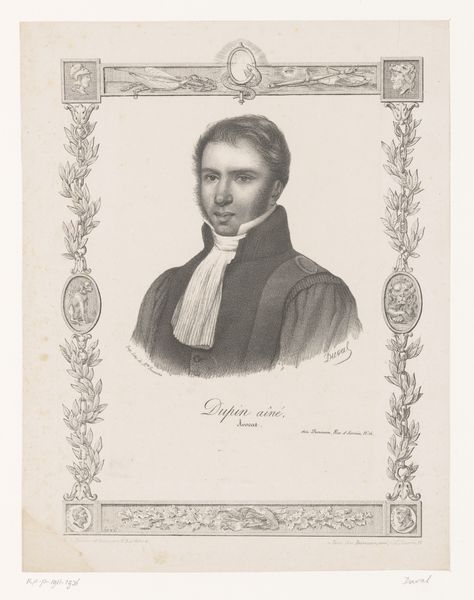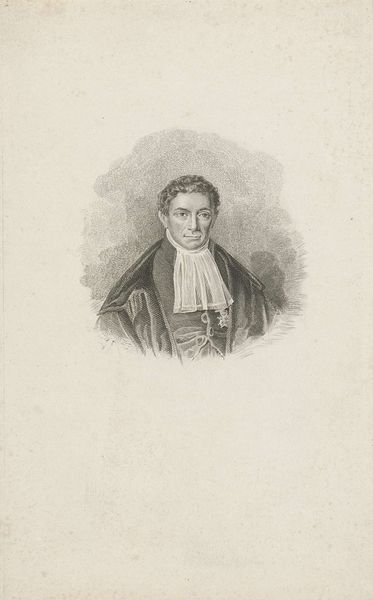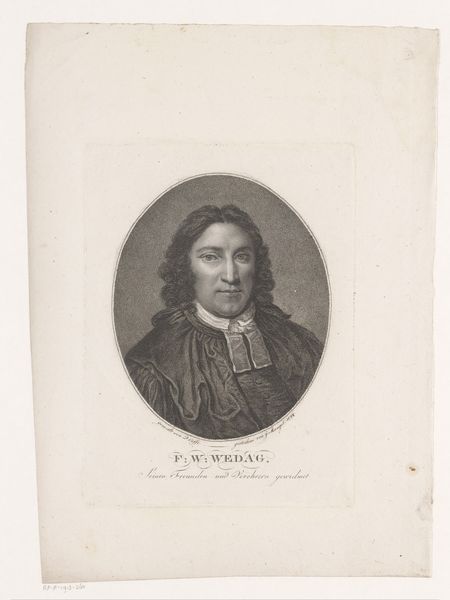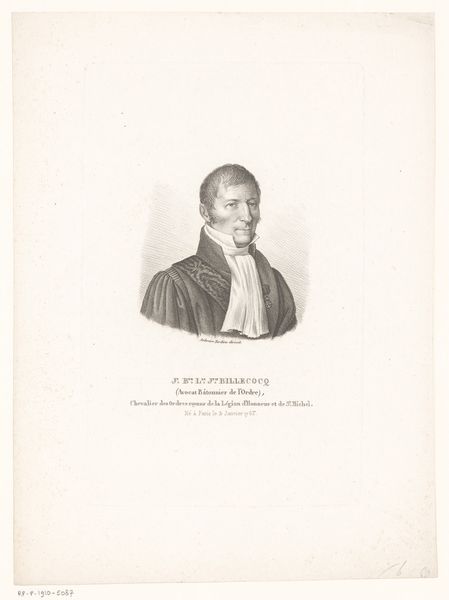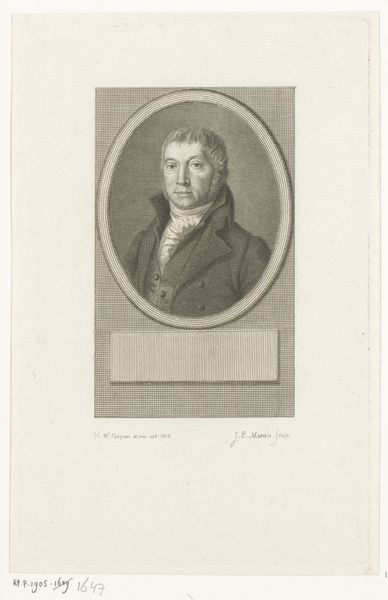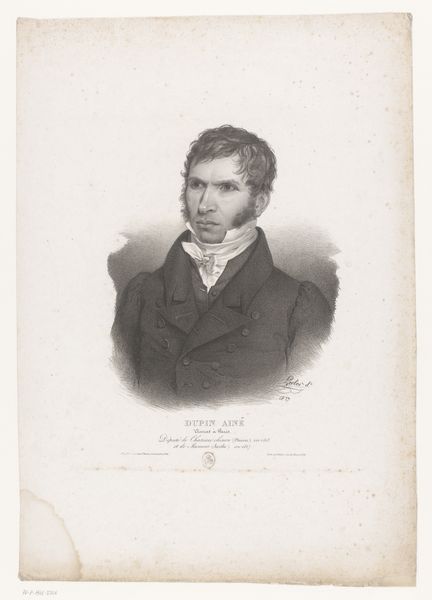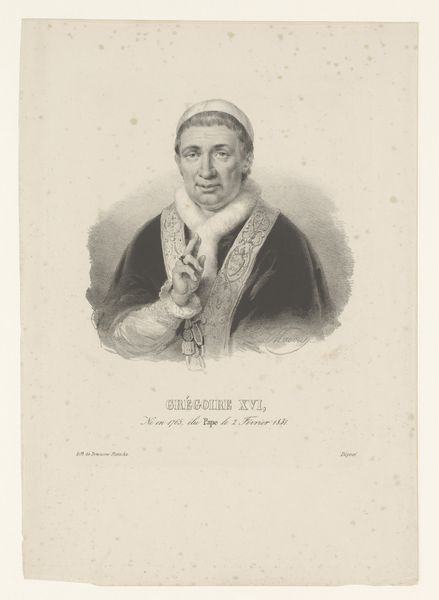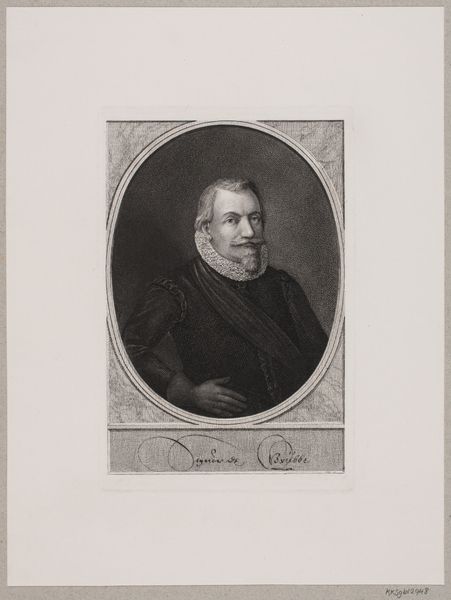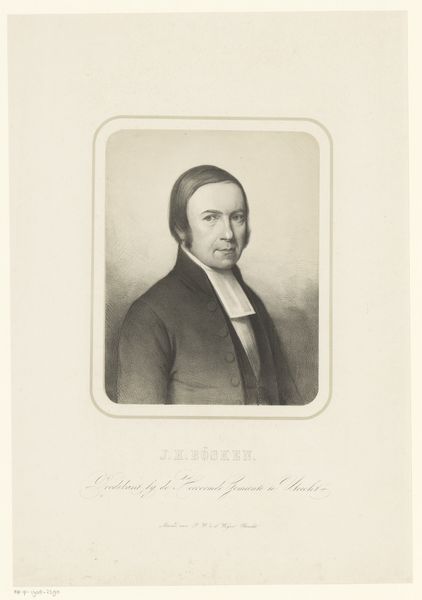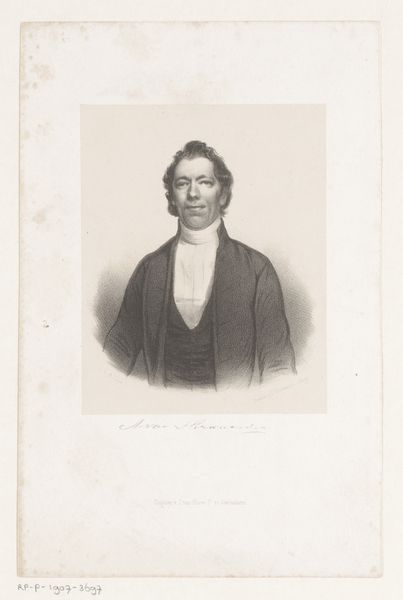
engraving
#
portrait
#
neoclacissism
#
old engraving style
#
academic-art
#
engraving
Dimensions: height 329 mm, width 227 mm
Copyright: Rijks Museum: Open Domain
Curator: Welcome. We’re standing before Nicolas Henri Jacob's "Portrait of André Dupin," an engraving from 1820 held at the Rijksmuseum. Jacob was a well-regarded engraver, and this work exemplifies the Neoclassical style of the era. Editor: Woah, he's staring RIGHT through me. Gives me the creeps a little. There's a real sense of… I don't know, authority? It's all so meticulously lined and shaded, it feels a bit severe, maybe. Curator: Severity aligns well with Neoclassical aesthetics, often favored by those in positions of power. Consider Dupin's role – a prominent lawyer and legal scholar. This portrait solidifies his place within a patriarchal structure of knowledge. He appears to gaze steadily, confident in his legal understanding. The tight collar and coat add to that sense of reserved authority. Editor: Yes, he looks important all right. And quite buttoned up, if you catch my drift! Do you think it might have been commissioned as some sort of… power statement? Like, "Look at me, I'm the law!" I keep coming back to how severe the composition is... look how tightly encased in an oval format he seems! Curator: Indeed. Analyzing who is included and excluded in portraiture provides insights into power dynamics within society at that time. This era favored formality to communicate respectability, especially when considering gender expectations; yet this image could certainly be read as promoting the sitter and the power and privilege inherent to their societal position. The engraver's style accentuates these notions by embracing classical art with such clarity, which itself speaks of education and refined taste. Editor: It makes you think who got a portrait, who didn't... and WHY. Makes me a bit uncomfortable about the status behind this, that someone’s being memorialized with those sharp lines. All that deliberate detail—it must have taken ages to engrave this plate... and to then look at it, there's little room for intimacy with the subject: Dupin is framed by rigidness on all sides. Curator: Precisely. Examining visual art, like this portrait of Dupin, requires us to consider how notions of gender, class, and race operated historically and whether such constructions continue to inform contemporary experiences and practices. We must also investigate, how the formal choices, materials, artist, sitter contribute in perpetuating, solidifying these power structures. Editor: Well, it certainly gave me a lot to think about – and the sense that I wouldn't want to face him in a courtroom, ever! Curator: And perhaps by questioning traditional authority as presented in artworks such as these, we challenge what has long been accepted and, hopefully, we expand ways to appreciate art today.
Comments
No comments
Be the first to comment and join the conversation on the ultimate creative platform.
